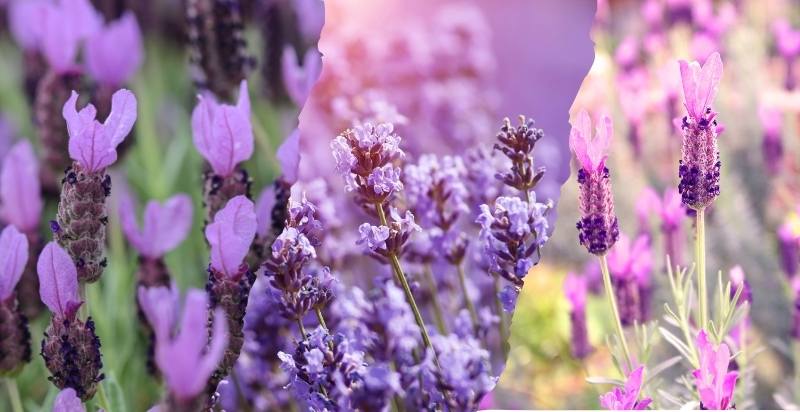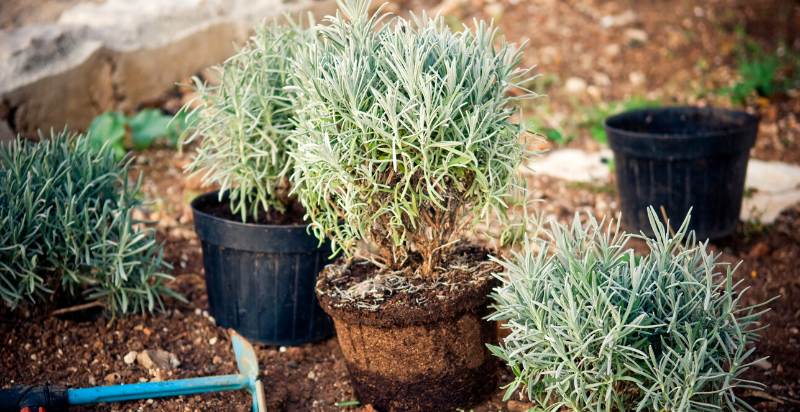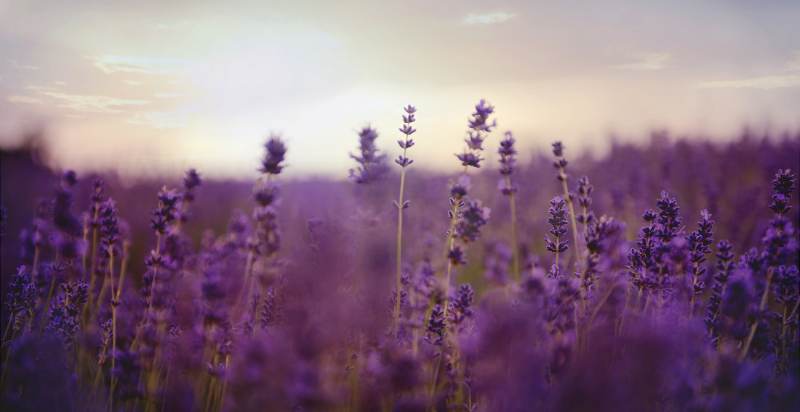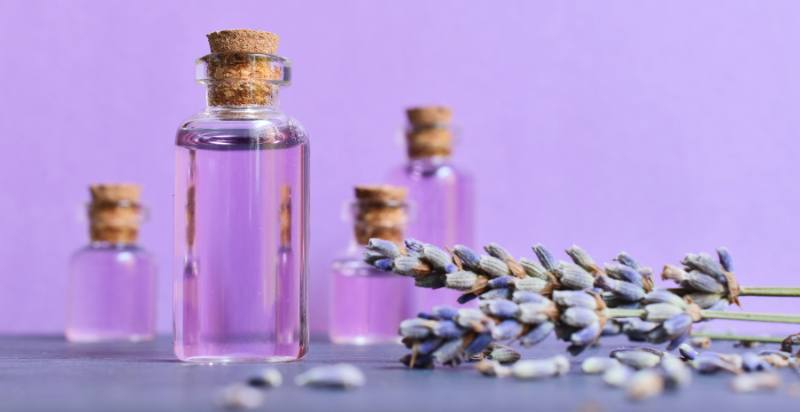Lavender flowers are among the most popular, aromatic, and beautiful plants in gardens worldwide. Lavender is a woody perennial plant with fragrant purple or white blooms on long stems. When combined with other plants, these flowers can create a stunning display of color and aromas throughout your garden.
From providing a calming atmosphere to repelling pesky insects, lavender has many beneficial uses. Let’s take a closer look at this amazing flower and all its benefits!
What is Lavender?
Lavender is a genus of 39 flowering plants in the mint family, Lamiaceae. It is native to the Old World and grows in temperate climates in Europe, Africa, and Australia. Lavender flowers range from light purple to deep violet and have an unmistakable aroma. The leaves are slightly furry and dark green.
History of Lavender:
Lavender has been used since ancient times, with references in Egyptian history as far back as 2000 BC. The Romans introduced lavender to England during the 1st century AD and soon began using it for scent, medicine, and religious ceremonies.
In the Middle Ages, lavender was a popular ingredient in perfumes and cosmetics due to its sweet and calming scent. Lavender was also used to treat various ailments, from headaches and digestive issues to skin problems. Today, lavender is used for aromatherapy, beauty products, and cooking.
Types of Lavender:
There are many types of lavender, but the most commonly found in gardens and landscapes is English Lavender (Lavandula angustifolia). This lavender grows to around 3 feet tall with purple flowers on long stems. Other popular varieties include French Lavender (Lavandula stoechas), Spanish Lavender (Lavandula stoechas), and Italian Lavender (Lavandula latifolia).

Uses of Lavender:
Lavender is a versatile plant that can be used for many purposes. The most common use of lavender is in aromatherapy, where its calming scent helps to relieve stress and improve mood. Lavender is also used in cosmetics, perfumes, and culinary recipes for flavoring food and drinks. In addition to its fragrant aroma, lavender can repel insects and other garden pests. Finally, lavender can also be dried and used in potpourri or herbal tea.
Benefits of Growing Lavender Flowers:
The main benefit of growing lavender flowers is their aroma. As soon as you step out into your garden, you’ll be met with the sweet smell of these gorgeous blooms! This scent has been known to reduce stress and anxiety levels and improve alertness and cognitive performance. Lavender is also used in natural remedies to treat headaches, insomnia, depression, and other ailments.
In addition to their calming aromas, lavender flowers are incredibly attractive. The long stems with purple or white blooms create a stunning visual display that can attract butterflies and birds to your garden. Bees also love the nectar from these flowers—they’re one of the best food sources for honeybees!
Lavender flowers also have several practical uses around the home. They are known for repelling pesky insects like moths and fleas. Dried lavender buds can be placed inside closets or drawers to keep these pests away. The flowers can also be dried to make potpourri for sachets, giving off a delightful scent when opened.

Choosing the Right Lavender Flowers:
When choosing lavender flowers for your garden, it is important to consider the available types. There are over 50 lavender plants, and some grow better in certain climates than others. French and English lavender are two of the most popular varieties; they both have attractive blooms but require extra care and conditions to thrive.
It’s best to select appropriate plants for your climate zone to ensure that your plants receive all the necessary nutrients to survive and thrive in your garden. You should also consider the amount of sun and water your lavender needs to stay healthy; for example, some varieties prefer full sunlight, while others require more shade.
How to Plant Lavender Flowers?
Lavender is a beautiful, fragrant flower used for centuries in gardens and homes. It’s easy to grow and can add a wonderful scent to any indoor or outdoor area. Plus, lavender is also known for its therapeutic benefits, which can help you relax and reduce stress levels. If you’d like to learn more about how to plant lavender flowers, look no further!
Choosing the Right Location
When it comes to planting lavender, finding the right location is key. Lavender grows best in locations that provide full sun and well-drained soil with a slightly alkaline pH (between 6.5 and 8). If you’re unsure what type of soil you have, consider taking a sample to your local nursery or garden center for testing. Additionally, pay attention to where the wind blows, as this can help determine the best location for your plants.
Preparing the Soil
Once you’ve chosen the perfect spot for your lavender plants, it’s time to start prepping the soil. This includes digging up the dirt and working in some organic matter, like compost or peat moss. For best results, mix two parts of garden soil with one part of sand for extra drainage. If you don’t have access to these materials, try mixing a handful of lime or gypsum per square foot into your soil.
Planting
Now that your soil is ready, it’s time to plant! Lavender plants should be spaced about 12-18 inches apart and planted at the same level they were growing in their pot or container. After planting, water each plant thoroughly and apply a layer of mulch around the area to help keep weeds out and moisture in.

Growing & Maintenance
Once your lavender plants are in the ground, you can sit back and enjoy watching them grow! Water them regularly (about once a week) to ensure they thrive and provide plenty of direct sunlight. Additionally, prune your plants in the late spring or early summer to encourage bushier growth. Finally, if you live in an area with cold winters, consider covering your lavender plants with straw or burlap for extra protection from the elements.
How to Care for Lavender plants?
Lavender plants require minimal care, but there are some steps you should take for the best results. When watering your lavender, avoid wetting the foliage, as this can lead to disease and fungal problems. Instead, water at the soil level and keep an eye on how much water your plants receive – too much or too little can both be detrimental to their health.
Additionally, add a layer of mulch around the base of your plants during the summer months to help retain moisture. Finally, trim off any dead stems or blooms throughout the growing season so new flowers will have room to bloom.
Preventions From Pests And Diseases:
Lavender is generally a very hardy plant, but it can still be affected by pests and diseases. The best way to prevent these problems is to keep your plants healthy with regular watering and fertilizing. Additionally, you should remove any dead or diseased leaves or stems as soon as you notice them, so the problem doesn’t spread.
Harvesting Lavender:
Once your lavender plants have reached their peak bloom, it’s time to harvest! The best time to do this is in the morning when the flowers are nice and dry. Cut off the stems at a 45-degree angle with sharp scissors or shears, then hang them upside down in a well-ventilated area until they’re completely dry. Once your lavender is dry, it can be used in sachets, potpourris, and more!

Harvesting Lavender Seeds:
Once your lavender flowers have faded away, look for round gray seed heads at the end of their stems. Gently collect the seeds and store them in a cool, dark place until you’re ready to plant. Scatter the seeds on moist soil when sowing and press down lightly with your fingertips. Keep the soil evenly moist and wait for germination – this can take anywhere from 1-3 weeks!
Harvesting Lavender Blooms:
Once your lavender plants have reached peak bloom, it’s time to harvest! Choose a sunny day when the flowers are dry, and then carefully snip off the stems at a 45-degree angle with sharp scissors or shears. Hang your bunches upside down in a well-ventilated area until completely dry, and then store them in an airtight container away from direct sunlight. Lavender blooms can make sachets, potpourri, and much more!
Harvesting Lavender Essential Oil:
If you’d like to try making your lavender essential oil, here are some tips on how to do it. Start by choosing a sunny day to harvest your blooms. Then, carefully snip off the stems at a 45-degree angle with scissors or shears. Hang your bunches upside down in a well-ventilated area until completely dry, and then store them in an airtight container away from direct sunlight.
Once your lavender blooms are dried, you can use several methods to extract the essential oil, such as steam distillation or cold pressing. The resulting oil should be stored in dark glass bottles away from light and heat – this will help preserve its potency! The lavender essential oil can then be used for aromatherapy, beauty products, and more!
Harvesting Lavender Cuttings:
If your lavender plants become too crowded or you’d like to propagate them, harvesting cuttings is a great option. Start by choosing healthy stems that have several sets of leaves and at least two nodes (these are small bumps located along the stem). You’ll also want to ensure the stems aren’t flowering yet – wait until the flowers have gone by before taking any cuttings.
Using pruning shears or a sharp knife, cut just below the node and ensure the cutting is at least 4-6 inches long. Then, dip the end of the cutting in rooting hormone and plant it in a pot filled with well-draining soil. Water regularly to keep the soil moist and wait for new growth – this can take anywhere from 2-6 weeks!
Harvesting Lavender Seeds:
Another great way to propagate your lavender plants is by collecting their seeds. Late in the summer, you should start noticing small clusters of purple flowers or round gray seed heads at the end of their stems. Gently collect these seeds and store them in a cool dark place until you’re ready to plant them.
Scatter the seeds on moist soil when sowing and press down lightly with your fingertips. Keep the soil lightly moist and wait for the seedlings to appear – this can take anywhere from 2-6 weeks.
How To Use Homegrown Lavender?
Once you’ve harvested your lavender, the possibilities are endless! Here are some popular ways to make use of your homegrown blooms:
- Create sachets or potpourri – dry your lavender buds and combine them with other dried flowers, citrus peels, herbs, or spices.
- Make natural mosquito repellent – mix lavender essential oil, witch hazel, and vodka in a spray bottle for an all-natural bug deterrent.
- Cook with fresh or dried flowers – add both to give your dishes unique flavor and color.
- Use it for aromatherapy – diffuse lavender essential oil to help reduce stress and anxiety.
- Dry it for craft projects – use your dried lavender for flower crowns or other decorations.
With these tips, you can enjoy the beauty and benefits of homegrown lavender! So why not give it a try?

Potential Risks From Lavender:
Lavender is generally considered safe, but there are a few things to remember when growing and using it. Lavender oil can irritate the skin, so use caution when applying it topically. Additionally, lavender essential oil should not be taken internally, as it can cause nausea and other side effects. Finally, keep your plants away from children and pets – lavender leaves and stems can be toxic if ingested.
Conclusion:
Lavender is an easy-to-grow herb with a beautiful scent and many uses. From harvesting blooms to propagating cuttings, there are many ways to enjoy this fragrant herb in your garden.
With these tips, you’ll be able to make the most out of your homegrown lavender – from creating sachets and potpourri to adding it to cooking dishes or using essential oil for aromatherapy. With proper care and maintenance, you can have beautiful lavender plants that will bloom year after year.
- Everything You Wanted to Know About Red Tamarillos - June 2, 2025
- A Guide to Tulips: Everything You Need to Know & More… - June 2, 2025
- Guanabana: Description, Flavor, Benefits, And Uses - May 27, 2025

10 thoughts on “How to Plant, Grow, and Care for Lavender Flowers”
Comments are closed.